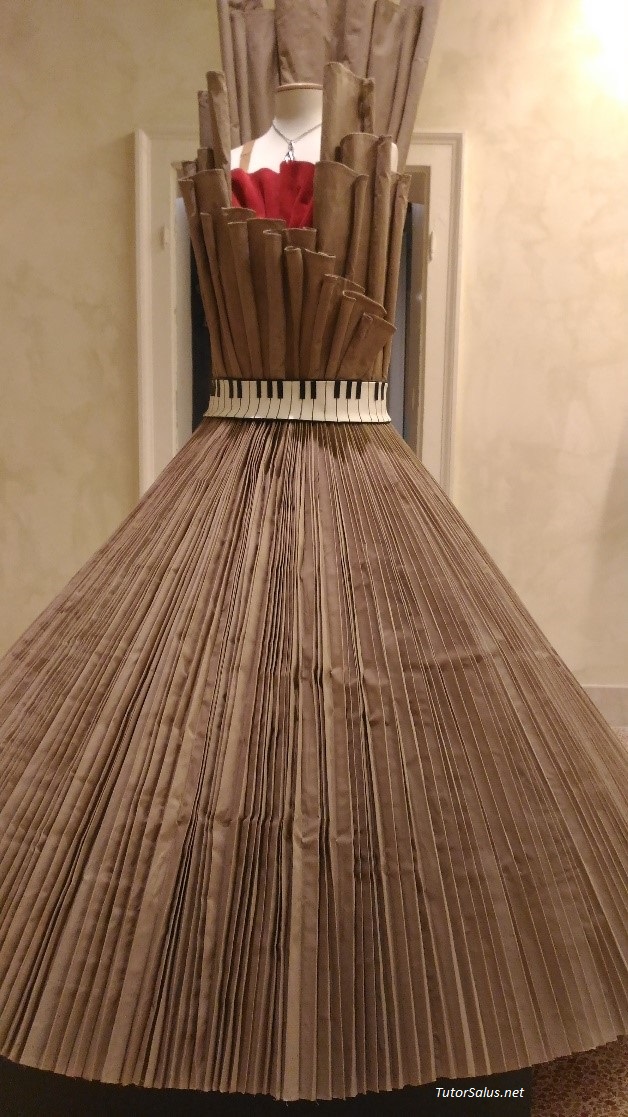Unapproachable to conscience[1].
‘Aurora’ (1948) by Salvador Dalì.

“…My ruthless and patient painting[2]”, Salvador Dalì has been admitting. Original painting by Stefano Frassetto[3]
I found out Salvador Dalì only recently and thanks to Facebook, where often good authors are hosted : here I’ll tell about his ‘Aurora’ (1948) which by me can well assert Dalì, otherwise criticized as often happens to someone able to be noted with good reason.
“…I believe that the time is near when, through a paranoic and working process of thinking, it will be possible (concurrently with the automatism and other passive conditions) to systematize the confusion and contribute to a total discredit of the world of reality[4]”.
The biggest sun of a radiant aurora appears behind eggshell-clouds breaking in the sky, while diligent workers climb on its surface and, slinged not to slip, do their best to scratch it. The two halves of the shell are also the two halves of a fragrant small white bread, and the sun a fresh egg yolk, and the profile too of a flourishing daisy : in front of such a wealth the sailor who was taking off with his boat, is running away terrified in the opposite direction.
“Today I declare that the new sexual appeal of women will depend on the possible use of their spectrum attitudes and resources, that is to say on the possibile their dissociation, bright carnal de-composition. The rainbow-coloured spectrum sets itself against the ghost (still performed by that homesick chemist of a country town so much resembling, desperately, to the other prosaic and diabetic ghost named Greta Garbo). The spectrum woman will be the dismantlable woman[5]”.
All the painting elements really make up an ironic performance, light and serious at the same time : Salvador Dalì looks incredulous at the terror driving any scientific discoveries and giving rise to cruelty, since the revolutionary atomic and quantum energy were soonest used for unimaginable devastations[6].
“I’ll not insist on what today it seems to me absolutely unacceptable, not only a poem, but also any literary production not responding to the anti artistic notation, loyal and objective of the world of facts, whose occult sense we’re still asking and looking for the revelation… Neither is the moment to fervently praise the photographic evidence, but to wander without a method on paths of unintentional, and notice the simple fact that the reason is becoming more and more the essential element in the knowledge field …[7]”
A thought definitely anti-artistic, anti-lyric anti-decorative is present indeed in the epiphany Dalì called ‘Aurora’, as any epiphany is not generalized until is individually recognized, coming out from darkness of a crowded night with the same delirious dreams which at morning we are conscientiously building, looking for hostility all around us. The good genius of Dalì was meeting the diabolic Picasso[8] and let himself be laughed at, due to his own affective fidelity and his disarming frankness.
Here however he dares to point out that our conscience ‘knows’ how to take back to a faultless justification perversion and paranoia by which so often we face the new and the unpredictable, until we do our famous existential doubt, invalidating but absolutely ‘natural’ for humans : an obsession indeed, able to crumble our experience, as far as the delirium itself.
“It was just a dream…!”, is the common saying of our clichè.
Marina Bilotta Membretti, Cernusco sul Naviglio – January 7, 2021
[1] “One day I’ll have to write long, maybe a book, on a character named Eugenio Sanchez, to whom I was linked as a friend during the nine months of my military service. To that extraordinary man, of whom unfortunately I’ve lost any trace, I owe some of the richest hours in my life and, moreover, the reading of a few most interesting texts. The man I’telling about was a carter by trade and absolutely uncultured; he could only read and write : however I could understand myself with him, better than with anyone else and right about on most unapproachable items, not only to our language but also to our own conscience”. Cited by : “Perverso e paranoico. Scritti 1927-1933”, Salvador Dalì 1971 ÉÉditions Denoël – original title ‘Oui’ / Ed. ‘il Saggiatore’ Milano 2017, p.96-97
[2] “Perverso e paranoico. Scritti 1927-1933”, Salvador Dalì 1971 ÉÉditions Denoël – original title ‘Oui’ / Ed. ‘il Saggiatore’ Milano 2017, p.234.
[3][3] Stefano Frassetto is born in Turin in 1968. After his degree in Architecture at ‘Politecnico’ he begun as graphic novelist for local magazines. In the ‘90s he edited in France too, on ‘Le Réverbère’ and on ‘Libération’ : then he created ‘Ippo’ for ‘Il Giornalino’ and then the stripe ‘35MQ’ for the swiss magazine ‘20 Minuti’. In 2000 he came into ‘La Stampa’ as portraitist for cultural page and the insert ‘Tuttolibri’, then for the weekly ‘Origami’. Today he works also for the swiss magazine ‘Le Temps’..
[4] “Perverso e paranoico. Scritti 1927-1933”, Salvador Dalì 1971 ÉÉditions Denoël – original title : ‘Oui’ / Ed. ‘il Saggiatore’ Milano 2017, p.132.
[5] “Perverso e paranoico. Scritti 1927-1933”, Salvador Dalì 1971 Éditions Denoël – original title : ‘Oui’ / Ed. ‘il Saggiatore’ Milano 2017, p.201
[6] Hiroshima and Nagasaki atomic explosions of August 6 and 9, 1945.
[7] “Perverso e paranoico. Scritti 1927-1933”, Salvador Dalì 1971 Éditions Denoël – original title : ‘Oui’ / Ed. ‘il Saggiatore’ Milano 2017, p.95.
[8] “…I twill be then natural that, when his fierce eyebrows (Dalì refers to Picasso, editor’s note) once more shoot the poisoned arrows of the objective world of his outward Saint Sebastian, he is the last one to be informed about the physical pain he does cause”, cited.by : “Perverso e paranoico. Scritti 1927-1933”, Salvador Dalì 1971 Éditions Denoël - titolo originale ‘Oui’ / Ed. ‘il Saggiatore’ Milano 2017, p.232. ‘Saint Sebastian’ is also the title of an essay Salvador Dalì published on the magazine ‘L’Amis de les Arts’ (1927).




